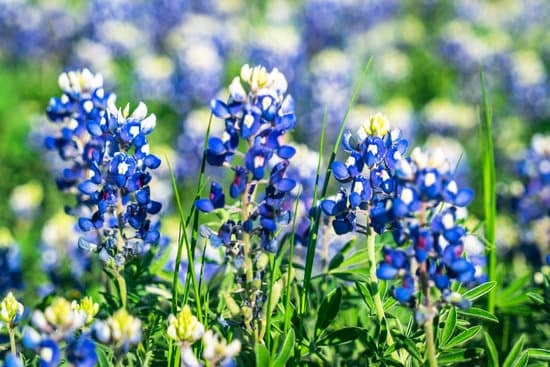
Experts predict that the 2023 Texas wildflower season, which typically runs from March through May, will be especially lush this year.
“I think it’s going to be an above-average spring, particularly when it comes to bluebonnets,” says Andrea DeLong-Amaya, the Lady Bird Johnson Wildflower Center director of horticulture. “We had good fall rain when the seedlings were just starting to come up, and that continued through the winter.”
Hitting the “wildflower trails” each year to see the Texas bluebonnet (Lupinus texensis), mountain laurel (Sophora secundiflora), Carolina jessamine (Gelsemium sempervirens), Mexican plum (Prunus Mexicana), and other varieties is a true Texas tradition.
Summer Drought + Fall Rain + Warm Winter = Early Bumper Bluebonnet Crop
Even though the fall and winter rain gets the lion’s share of credit for the encouraging wildflower forecast, last summer’s drought, and warm weather in January and February, also play a role in the quality of wildflowers across the Lone Star State and when they will peak.
“The drought may have caused some grasses to die back,” DeLong-Amaya explains. “That opens up soil space for bluebonnets and other spring-blooming annuals to grow.”
Texas has five species of bluebonnets native to the state and the most common, the Texas bluebonnet, may peak earlier in 2023 than its usual mid-April time frame.
The warmer it is, the earlier things start to bloom,” says DeLong-Amaya.
The Lady Bird Johnson Wildflower Center reports that weather maps shared by David Yeomans, KXAN meteorologist, and Wildflower Center advisory council member, showed that January and February temperatures were significantly warmer statewide in 2023 than the previous year.
"We've had above normal rainfall in the fall which is good because that's when not only bluebonnets, but the other wildflowers typically germinate," Julie Marcus, senior horticulturist at the Lady Bird Johnson Wildflower Center, told KXAS. "But we've had such warmer temperatures, seasonally warm temperatures, that have caused them to bloom a little earlier. We are a little worried now that they are going to peak earlier than normal."
Early Reports Show Wildflower Season off to Colorful Start
Reports rolling in across the state by mid-March showed that the 2023 wildflower season was already off to a colorful start.
“This year, thanks to a deluge of winter rains, wildflower season in Texas has started early, and Indian blankets, brown-eyed Susans, Mexican hats, and, of course, the beloved bluebonnet are blooming strong all across the Lone Star state right now,” wrote Mae Hamilton on March 17 in AFAR travel magazine. “Some Texas springs bring just a hint of color across the countryside, while others herald in vast carpets of blooms stretching as far as the eye can see. This spring, thanks to a wet winter, the wildflower season promises to be particularly delightful.”
In Hill Country, Visit Fredericksburg says that bluebonnets, Indian paintbrushes, red poppies, purple tansy, ox-eyed daisies, and win cup flowers bloom in the area each spring and can be viewed on roadside fields and at wild seed farms.
“The 2023 wildflower season has arrived and will likely run through mid-May. Bluebonnets are blooming around town and should be at their peak through the end of March with a little rain,” reported Visit Fredericksburg.
Those in North Texas are looking at a peak wildflower season in 2023 ranging from late March to early April. On average the wildflower season peaks in North Texas about 10 to 12 days after the season peaks in Central Texas.
Mind Your Manners During Texas Wildflower Season
Texans should be aware of wildflower season etiquette when they go out to enjoy the beauty of nature.
For starters, be safe when pulling off the highway to view wildflowers, find a safe spot to park and exit your vehicle, and keep safety in mind when going to photograph wildflowers.
"We always tell people to be respectful of fence lines and don't trespass, but the main thing is being safe," Marcus told KXAS. "And try to pick an area where somebody has already sat down instead of making a new spot where you've got the whole area trampled. Because bluebonnets are annuals, if they're trampled or crushed, they won't be able to set seed and provide bluebonnets for the next year or years to come."
Visit Brenham, a popular destination for many viewing wildflowers each spring, has some etiquette do’s and don’t for those taking scenic trips:
- Respect private property. There are plenty of public places to take pictures.
- Do not cross fences. Take the photo from the roadside of the fence.
- Follow the trail left by those before you.
- Sit among the flowers in the places that have already been used as a seat.
- Try to step between the bluebonnets if there is no trail.
- Do not pick the bluebonnets. We need them to go to seed for future wildflower seasons!
- Be alert—fire ants, snakes, and poison ivy are all likely to thrive in the same places as the bluebonnets.
- Use caution on roadsides. If there is not an adequate shoulder, continue to a safe place.
- Please don’t leave trash behind; if you find any, pay it forward by taking it with you when you leave.
“Common sense and common courtesy are key to an enjoyable wildflower season for all,” concluded Visit Brenham.



